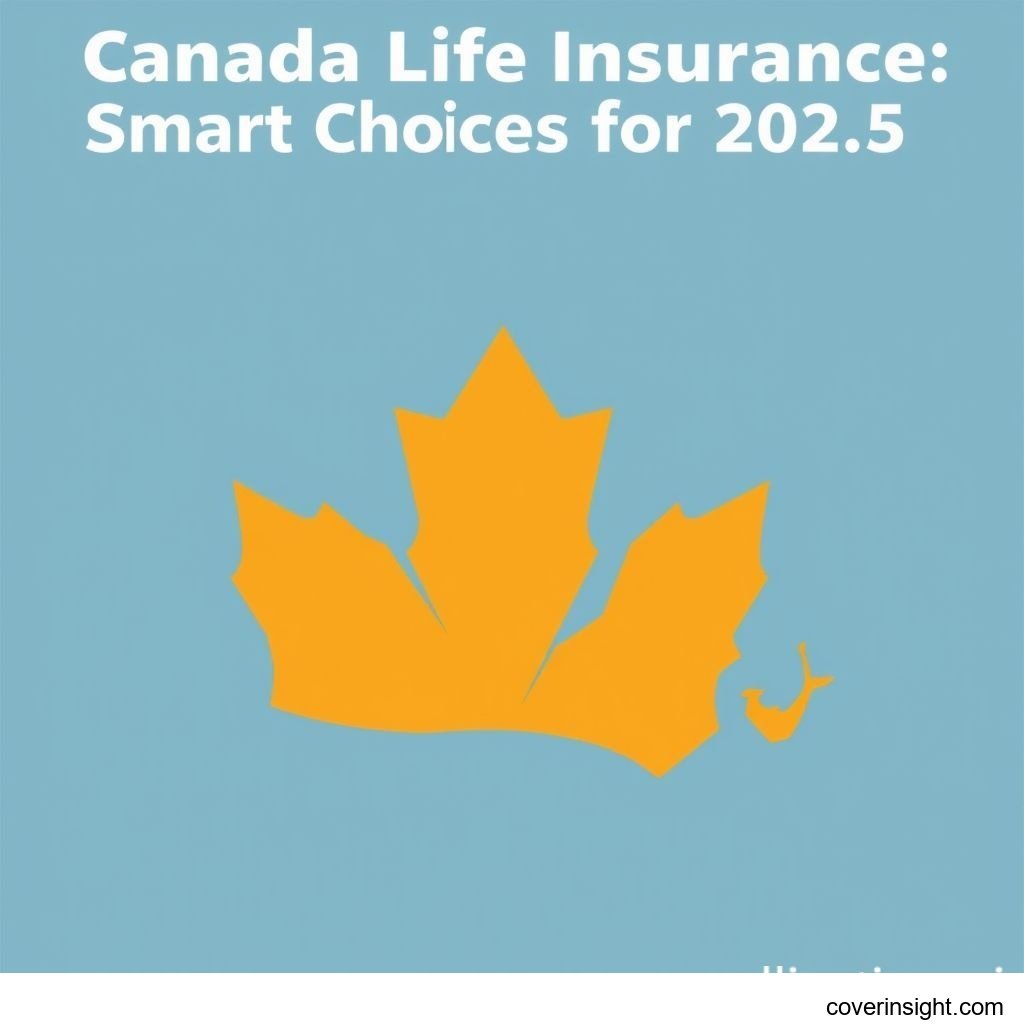Introduction
Navigating the world of life insurance in Canada can feel like a trek through a dense forest, but understanding your options is paramount for securing your loved ones' financial future. As we look towards 2025, the demand for clear, concise information about policies like those offered by Canada Life continues to grow. A crucial first step for many is utilizing a life insurance needs calculator. This invaluable tool helps Canadians estimate the coverage required to protect their families, ensuring that if the unthinkable happens, financial stability remains, debts are covered, and future plans, like a child's education, don't go off the rails. It’s about putting your ducks in a row, ensuring your family isn’t left in a lurch.
Coverage Details
When considering Canada Life insurance, two main types often come into play: Term and Whole Life. Each serves a distinct purpose, offering different benefits and structures. Understanding what’s included and what isn’t is key to making an informed decision.
What’s Included
Term Life Insurance is akin to renting an apartment; you get coverage for a specific period, usually 10, 20, or 30 years. It's often the more budget-friendly option, making it ideal for covering significant temporary financial obligations such as a mortgage, raising young children, or covering a business loan. If you pass away within the term, your beneficiaries receive a tax-free death benefit. Many term policies also offer the option to convert to a permanent policy later, providing flexibility as your life circumstances evolve.
Whole Life Insurance, on the other hand, is like owning a home; it provides coverage for your entire life, as long as premiums are paid. Beyond the lifelong death benefit, whole life policies build cash value over time on a tax-deferred basis. This cash value can be accessed through withdrawals or loans, offering a financial safety net for future needs. The premiums are typically fixed, providing predictability and peace of mind. Both Term and Whole Life policies from Canada Life offer various riders, such as critical illness benefits or waiver of premium in case of disability, adding layers of protection tailored to your specific situation. Notably, the death benefit from a life insurance policy is generally tax-free to the beneficiary in Canada, providing significant financial relief.
Common Exclusions
While life insurance offers substantial protection, it’s important to be aware of common exclusions that might prevent a payout. Most policies include a suicide clause, meaning if the insured dies by suicide within the first one or two years of the policy, the death benefit may not be paid out (though premiums paid might be refunded). Material misrepresentation or fraud on the application is another significant exclusion; if you fail to disclose crucial information about your health or lifestyle, the policy could be voided. Deaths resulting from high-risk activities not declared or excluded in the policy (e.g., extreme sports without a special rider) or from committing a criminal act are also typically not covered. Reading the fine print is paramount, like dotting your i's and crossing your t's, to avoid any unwelcome surprises down the road. For more general insights into insurance, you might want to check out some [Insurance Resources Global].
Cost Analysis
The cost of life insurance isn't a one-size-fits-all situation; it varies significantly based on a multitude of factors unique to each individual. Understanding these elements can help you get the best bang for your buck.
Price Factors
Several key factors influence the premiums for your Canada Life insurance policy. Age is undeniably one of the biggest determinants; generally, the younger and healthier you are when you apply, the lower your premiums will be. Your health and medical history play a crucial role, with pre-existing conditions or a history of serious illness often leading to higher rates. Lifestyle choices such as smoking, excessive alcohol consumption, or engaging in high-risk hobbies like skydiving can also push premiums upwards. The type of policy (Term vs. Whole Life) and the coverage amount you choose directly impact the cost; a larger death benefit or the added features of a whole life policy naturally come with higher premiums. Your gender can also be a factor, as actuarial tables show differences in life expectancy. Even your occupation might be considered if it involves significant risk.
Saving Tips
Want to save a few loonies on your premiums? Starting young is probably the best advice; don't put off getting coverage. The younger and healthier you are, the more affordable it will be. Maintaining a healthy lifestyle, including a balanced diet and regular exercise, can lead to better health classifications and lower rates. If you’re considering a substantial policy, a medical exam is often required, and being in good shape can certainly help. It's also wise to accurately assess your needs using a life insurance calculator to avoid over-insuring. For some, a combination of term and whole life might be a cost-effective strategy. Comparing quotes from various providers, not just Canada Life, is a smart move, though Canada Life remains a strong contender in the Canadian market. Always ensure you're getting apples-to-apples comparisons. For comprehensive guidance on consumer financial products, the [Financial Consumer Agency] of Canada is an excellent resource.
FAQs
How much does life insurance needs calculator cost?
A life insurance needs calculator itself doesn't cost anything. It's a free online tool provided by insurance companies, financial advisors, or independent financial planning websites. Its purpose is to help you determine how much coverage you might need based on your income, debts, dependents, and future financial goals. Think of it as a helpful guide, not a product you purchase.
What affects premiums?
Premiums are primarily affected by your age, health (including smoking status and medical history), the type and amount of coverage you choose, your gender, and lifestyle habits. Generally, healthier, younger individuals seeking term insurance for a lower coverage amount will pay less.
Is it mandatory?
No, life insurance is not mandatory in Canada. However, it's highly recommended for anyone with dependents or significant financial obligations (like a mortgage) whose absence would create a financial hardship for their loved ones. While not mandatory, having it can provide a significant safety net.
How to choose?
Choosing the right policy involves assessing your current financial situation, future needs, and budget. Consider your family's financial obligations (mortgage, education, daily expenses), your income, and how long you need coverage. Term life is often suited for specific periods of high financial responsibility, while whole life offers lifelong coverage and a cash value component. Consulting a licensed financial advisor is always a good idea to help tailor a policy that fits your unique circumstances. For more general Canadian insurance information, visit [CA Insurance Home].
Consequences of no coverage?
Without life insurance, your loved ones could face significant financial strain upon your passing. This could mean struggling to cover funeral expenses, outstanding debts (like mortgages or credit card balances), and everyday living costs. Long-term consequences might include an inability for children to pursue higher education or a surviving spouse having to drastically alter their lifestyle or return to work prematurely. Consider the story of the Chen family in Calgary. When Mr. Chen, a sole breadwinner, passed away unexpectedly, his Canada Life whole insurance policy ensured that their mortgage was paid off and their two children could still pursue their university dreams, preventing a financial catastrophe. According to the [Insurance Bureau of Canada], understanding such risks is crucial for Canadian households. As a matter of fact, Statistics Canada data highlights that Canadian households carry an average of [insert current or recent relevant household debt statistic, e.g., "$1.85 in credit market debt for every dollar of disposable income" as of late 2023], underscoring the potential financial burden if a primary income earner passes away without adequate coverage.
Author Insight & Experience:
Based on my experience navigating the Canadian insurance landscape, one often underestimates the profound peace of mind a well-chosen life insurance policy provides. It's not just about money; it’s about ensuring your loved ones won't have to shoulder an unexpected financial burden while grieving. As someone living in CA, I've seen firsthand how a little bit of planning and a proactive approach can make a world of difference when life throws a curveball, transforming potential hardship into manageable challenges.







Comments